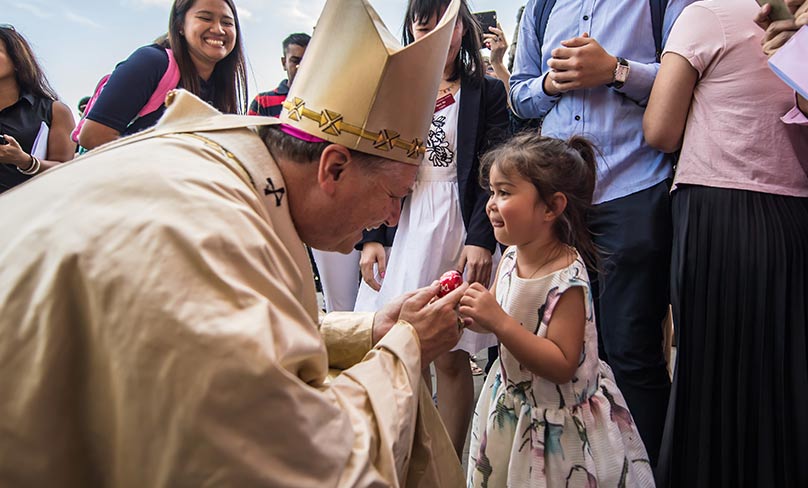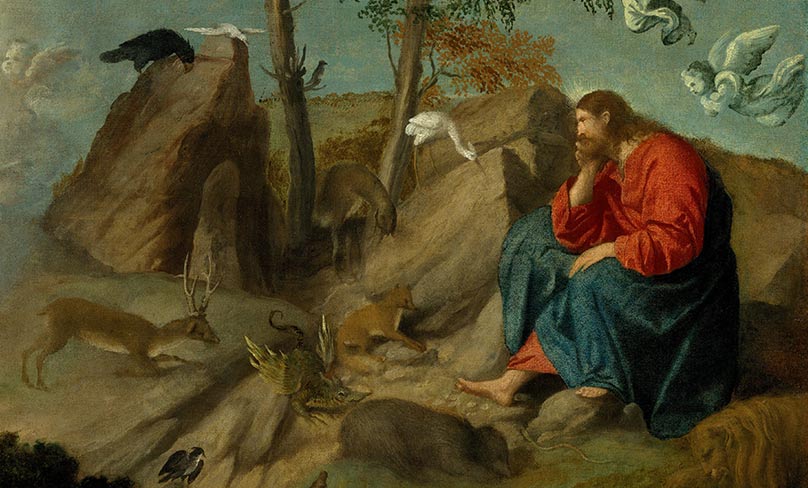
Have you ever wondered why young children will often participate in hat parades at Easter time? Or where the Easter bunny came from? Or why chocolate eggs have become synonymous with one of the most important events in the Christian calendar?
At this time of year, children in Catholic schools are busy learning about the meaning of Easter and understanding that, on the one hand, it is about mourning the death of Jesus, but on the other hand, it is about celebrating his rebirth. As children delve deeper into what Easter is all about, they may start raising some interesting questions at home and turn to you for answers. Here are some useful tips on how to prepare yourself and engage your child in constructive conversations about Easter.
1. Understand some of the Easter traditions and where they came from
Easter hat parades
Pre-schoolers often participate in hat parades at Easter time. This tradition dates back to the mid-1800s in New York when upper class families would attend Easter services and then emerge wearing new bonnets in celebration of the spring season.
Easter bunny
On Easter Sunday we celebrate the resurrection of Jesus Christ. Rabbits are known for reproducing in large numbers and are an ancient symbol of fertility and new life. Here is an interesting fun fact, baby rabbits are called ‘kittens’.

Chocolate eggs
The egg is also an ancient symbol of new life and in that way is also a symbol of the resurrection of Jesus Christ. If you are lucky, your child will bring home a beautifully decorated egg from school this Easter.
2. Have a conversation about what Easter is really about
On Good Friday, Christians recognise that on this day Jesus was crucified on the cross. Explaining death to children can be tough. If your child has questions about death, reassure them first and foremost that we are safe and well. Talk about the fact that the cycle of life means that one day the people in their lives will die and go to heaven where they will be with God; but that won’t happen for a long time.
Remember, Easter is about much more than the death of Jesus; it is about his rising and this is the exciting part of the story that parents should focus on when talking about Easter with your child. The message is about renewal, forgiveness and love for one another leading us all to live better lives.
3. Why does Lent last for 40 days and what happens during the Lenten season?
The Lenten season started on 6 March and ends on 20 April this year. The reason that Lent lasts for 40 days is because it represents the time that Jesus spent in the desert where he was hungry and thirsty, but remained resolute in his trust in God. The lesson to share with children about this is that God has given them trusted people in their lives, such as their parents and grandparents, who are here for them to talk to when they feel unsure or unsafe or when they are worried. Remind them that they are loved by you and by God and you will keep them safe. By the way, if you have done the maths, the days add up to more than 40 because we do not count Sundays, as this was the day Jesus rose from the dead.

4. Why has my child brought home a Project Compassion box?
The three central themes of Lent are prayer, fasting and almsgiving. So now is a good opportunity for parents to encourage more family prayer time. If you need some inspiration, check your local bookstore for prayer books for children or talk to your school office about resources they can share with you.
With regard to fasting and almsgiving, the lesson here for children is to be grateful for all of the blessings in their lives and to think about those who are less fortunate. Encourage children to go without something small, such as an ice block or another treat from the tuckshop, and instead give that money to the Project Compassion box in their classroom. Project Compassion is Caritas Australia’s annual Lenten fundraising and awareness-raising appeal. Millions of Australians come together in solidarity with the world’s poor to help end poverty, promote justice and uphold dignity. Talk to your child about how blessed they are and explain that by giving a little bit away, we can make a big difference to those who have less than us.
The stories of Easter can teach us very important messages about how to live – here is one example
Your children may hear the story of the washing of the feet from the Gospel of John. In Jesus Christ’s time, after walking the dusty streets in only sandals, servants would wash their master’s feet to clean them. Jesus took the cloth and water and in an act of humility, love and service, gave us an example to live by. No one person is better than another and this is a very important message to share with children during Easter.
Article provided by the Council of Catholic School Parents NSW/ACT and Teacher at the Gate by the Efficacy Project.
